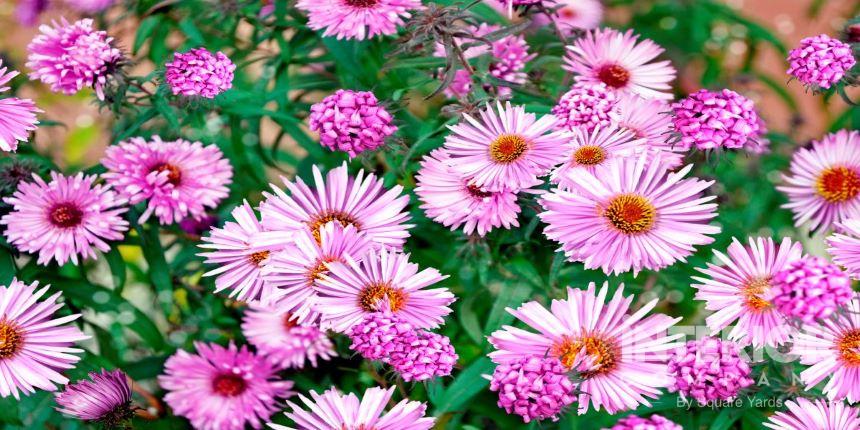- Kitchens
- Design Ideas
- Cities
- Trends
- Guides
- Price Calculators
- Our PortfolioNEW
- More
- Home
- Trends
- Furniture And Decor
- Indoor Plants
- Growing Chrysanthemum Flowers Indp
Your Ultimate Guide for Growing & Caring Vibrant Chrysanthemum Plant
It’s time to fall in love with the fall, jazzing up your home gardens and terraces with stunning chrysanthemum – one of the most popular autumn flowers that are certainly a classic addition to the greens. This bold and prettiest range of flowers is a staple during autumn gardens that thrive prolifically well in the season. Gaining popularity for more than 2,000 years, Chrysanthemum is named after the Greek words chrysos (means gold) and anthos (means flower) and is commonly renowned as “mum”. It is also perceived as a symbol of immortality in Japan as an expression of sun and light. According to research under the category of flowers, it had two botanical names: Chrysanthemum sp. and Dendrathema sp. It was originally placed in the genus Chrysanthemum but was later moved to the category of Dendrathema. However, the decision was soon changed, and the plant once again got its scientific name as “Chrysanthemum”.
Table of Content
Types and varieties of Chrysanthemums

You will find countless types of chrysanthemums varied in terms of height, color, spread, size, and flourish time. Moreover, you will also find hardy garden mums and show mums. Have a look at some of the most popular types of chrysanthemums:
- Single: Long, daisy-like white petals with yellow centers
- Decorative: Large with several rows of petals
- Spider: Long petals in tube shape with curved ends
- Spoon: Blossom with countless spoon-shaped petals
- Cushion: Cushion-shaped blossom in medium size
- Anemone: Cushion-shaped and center-covered with short petals
- Pompon: Small ball of tight petals
- Quill: Straight and long tube-shaped petals
Chrysanthemum flowers are among the easiest plants to grow; cushion, decorative, single, and anemone are commonly found in home gardens. However, non-hardy and show-quality blooms demand a little extra care.
What is the growing season of chrysanthemums in India?
With famed Indian names such as Shevanti, Chandramallika, Jamanthi, and Chamanthi, this beautiful bliss does not have a specific season to bloom; it just requires a good amount of sunshine and can thrive all year round. However, the plant does not grow well in too hot summers, thus, the spring or late summer season is the ideal time for them to flourish in India. It is said that chrysanthemums develop a great root system during this season and can perfectly resist the harshness of autumn and winter seasons. You're advised to position the plant in soil that drains well and in a sunny spot that will certainly enhance the blooming. If you wish to use them as a colorful, statement piece in your garden all year round, plant them in early spring so that they have the best chance of surviving the following seasons.
How to grow and care for chrysanthemum plants?

As we have already mentioned chrysanthemum plants are one of the easiest plants to grow, they can be easily planted at home. Moreover, these bright, colorful, and gorgeous flowers make a stunning inclusion to balconies, gardens as well as terraces.
Below are the factors that play a major role in the growth of chrysanthemum plants:
Propagation
Although chrysanthemums can be easily planted from seeds, cuttings as well as division, you're advised to grab a healthy plant from a nursery. If you're growing them with seeds, you just need to directly plant the seeds into the container or the soil bed. Alternatively, when growing these plants from cuttings, you need to plant some 6'7-inch cuttings taken from a healthy plant, directly into the soil once you've dipped them into a rooting hormone.
Soil
Well, you need to be extra careful and plant Shevanti flowers in well-draining and good-textured soil such as sandy loam soil. The plant blooms impeccably well in soils rich in organic matter and compost, and sandy loam soil is recommended for growing chrysanthemums since it does not allow the stagnation of water.
Temperature
Another major factor that plays a vital role in the growth of the plant is temperature. Chrysanthemums are known to grow in the temperature ranging from 20- 30°C, however, the tropical and subtropical parts have higher summer temperatures which is why you must decide the placement of the plants somewhere under shade.
Position
Chrysanthemum's bloom and blossom in the sunshine, and they demand to be kept under the sun for at least 5-6 hours a day. For better results in terms of growth and blooms, make sure you provide the plant bright sunlight for a long time. However, hot summer has adverse effects on the growth of the plant, thus, you're advised to not forget and move them under the shade in the sizzling summer.
Watering
Since chamanthi flowers demand good sunlight, there is a need for frequent watering as well. If kept under the sun for a long time, they are likely to lose moisture and thus, require to be watered often. We would suggest you protect the plant with a layer of mulch to avoid water loss since sun exposure of more than 5-6 hours a day can dry it up.
Fertilizers
Though the shevanti plant does not demand heavy feeding, you can serve them with cow manure in a month or two. The plants can also be provided with a liquid fertilizer according to the instructions on the label and a 12-6-6 slow-release chemical fertilizer when they begin to grow.
Pest and Diseases
Chrysanthemums are a bit sensitive and cannot bear diseases like gray mold, root rot, and powdery mildew. They are also prone to pests like chrysanthemum eelworm, leaf, and stem miners, caterpillars, aphids, and worms. These pests can truly affect the growth of plants; you can treat them with a few homemade fertilizers such as neem oil or soap solution.
No of sepals in a chrysanthemum flower?
Distinguished in two different types of the chrysanthemum comprises of RF (Ray Florets) that come with two fused carpels and an exclusive petal, and disc florets that consist of all together infused with five petals and stamens that are relatively attached to other two of the carpels.
How to Prune Potted Mums?
Most of the gardeners might have experienced that the beautiful garden mums they bought from a nursery grew leggier when they planted them in their garden the following year. The reason behind this is that several varieties of mums become leggy by summer and start producing flowers when left in the garden to bloom naturally. It happens because Chrysanthemum morifolium ' the flower of garden mums – gets life in cool temperatures. And if you leave your garden mums to bloom during summer, they will soon start fading due to the excess heat.
In such a case, you just need the timely pinching of the flowers so that they can grow full and bloom through the season just as flourishing as they were when you grabbed them from the garden center.
Pruning Instructions
As you have already learned by now, chrysanthemum mums sprout in the spring season and start to bloom in the fall. However, depending on the temperature and environment, they will bloom too early and get leggy if you leave them to grow without pinching. You can prevent them from growing quite tall and leggy, you need to pinch mums back in the early spring season and the mid-summer.
Below are some of the helpful pinching tips. Let' take a look:
First Pinching: You need to start pinching the stems of the plant during spring when they have reached the height of about 6 inches. It is required to take a stem of about 2 to 3 inches above the base of the plant between your thumb and index finger to simply pinch it off. Note that a pair of pruners or snips can be used to cut the stems.
Second Pinching: Once you are done with the first pinching, there will be new stems emerging from where the plants were initially pinched. You need to pinch them back once they have reached 6 inches in length. This is a continuing process for all stems for that plant.
This process can be repeated until mid-July when the pruning can be ceased while plants can grow and produce buds to flourish in the autumn season. If you pinch them back post-mid-July, it will lessen the number of flower buds.
Ready for a home transformation?
Let our designers assist you!
Recent Posts
Related Category
- Balcony
- Bedroom
- Home Decor
- Living Room
- Outdoors



































